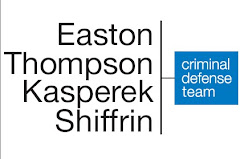On direct appeal, with limited exceptions, such as facts as to which a court may take judicial notice, the appellate courts may only consider the facts as they appear on the record (see,e.g., People v Kinchen, 60 NY2d 772 [1983]). Yet sometimes significant and material portions of the proceedings may not appear on the record. For example, Sandoval hearings may be conducted in chambers without a court reporter present.
Although some appellate decisions permit an appeal to be held in abeyance pending a reconstruction hearing (see, People v Odiat, 191 AD2d 183; People v Armlin, 37 NY2d 167, 173; People v. James, 132 A.D.2d 932, 933 ), the Court of Appeals has restricted the use of reconstruction hearings to establish a record (People v Velasquez, 1 NY3d 44 [2003] ["Reconstruction hearings may be appropriate where it is clear that a proceeding took place that was not transcribed ( see e.g. People v. Michalek, 82 N.Y.2d 906 [1994] [reconstruction hearing ordered where Sandoval hearing held but not transcribed] ); the trial court refused to record the proceedings ( see e.g. People v. Davidson, 89 N.Y.2d 881 [1996] [trial court refused to record substantial portions of voir dire proceeding] ); the minutes have been lost; or there is significant ambiguity in the record. Reconstruction hearings should not be routinely ordered where, as here, the record is simply insufficient to establish facts necessary to meet the defendant's burden of showing that he was absent from a material stage of the trial."]).
Rather than wait until appeal to discover whether one's client will be able to appeal on a record which fully and accurately captures all that occurred in the lower court, trial counsel can and should take the simple step of reciting for the court reporter to record that which occurred but had not been recorded ("let the record reflect that...). As the decision in People v Torres (2012 NY Slip Op 05461 [4th Dept 7/6/12]) demonstrates, the difference between a client obtaining a reversal may depend on something as simple as an attorney recounting on the record before a court reporter that which had occurred unrecorded.
In Torres, there was partial closing of the courtroom during jury selection that resulted in the exclusion of the defendant's wife. There was no contemporaneous record objection to this exclusion. Later, in the context of a post-trial 330.30 motion, there was an agreement by the court and parties that the defendant had, in fact, objected. Although the Appellate Division panel split 3-2 as to whether the courtroom closing was reversible error, the entire panel agreed that the issued had been preserved for review as a matter of law.
As the majority opinion explains
defendant's objection was made off the record, the parties and the court agreed during argument on defendant's post-trial motion to set aside the verdict that defendant had indeed objected to the court's procedure. It is well settled that a post-trial motion pursuant to CPL 330.30 cannot preserve a contention for review that is raised for the first time in the motion (see People v McFadden, 94 AD3d 1150, 1150; People v Jones, 85 AD3d 1667, 1668), but as noted that is not what occurred here inasmuch as defendant made an objection before jury selection. The objection merely was not placed on the record at that time. Here, the record establishes that "the trial judge was made aware, before he ruled on the issue, that the defense wanted him to rule otherwise, [and thus] ]preservation was adequate" (People v Caban, 14 NY3d 369, 373).




